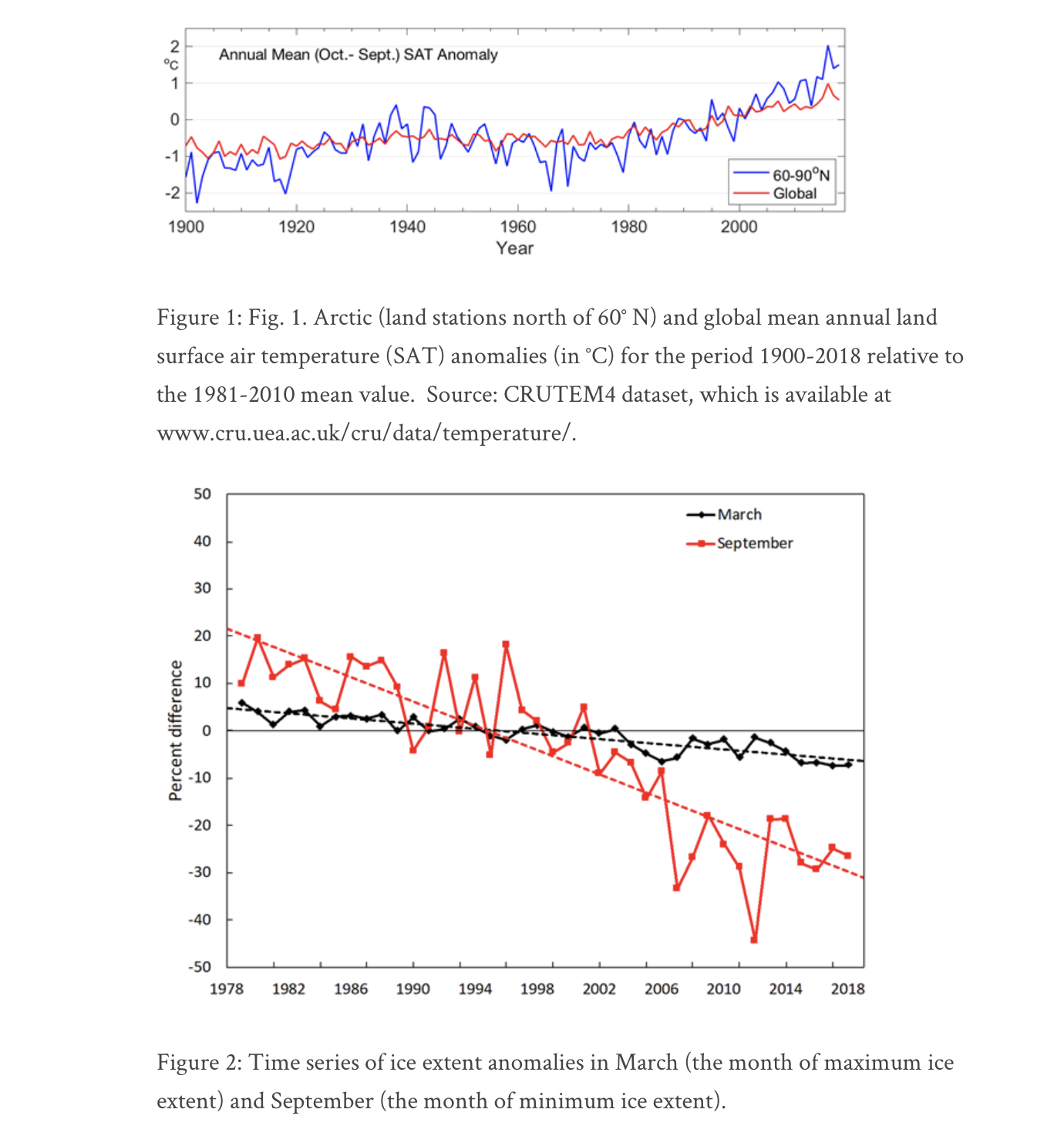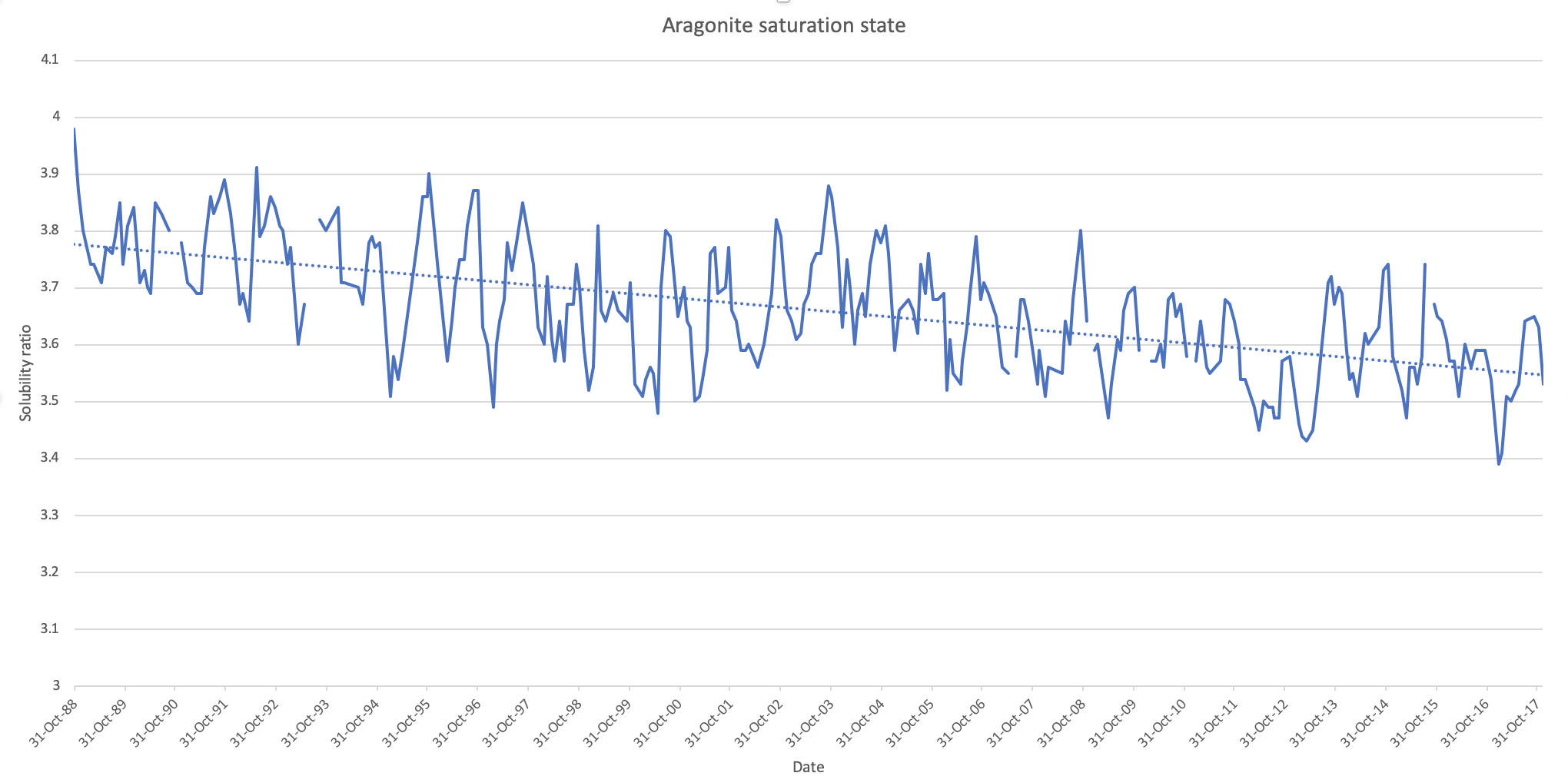The task for this week was to find a new dataset and look for underlaying signals in our previous datasets.

Isabelle found lots of new data on sea-ice extent from many locations! She decided to take a closer look on Arctic sea ice data and hypothesized the dominant signals to be correlated with sea surface and air temperature (pictured left). Her research lead to a conversation with a professor on the effect of aerosols around the area and she would like to potentially collaborate with the land and air groups to see if they can find a correlation.
Mikaela found an interesting dataset on the accumulation of plastic in the Great Pacific Garbage Patch. While all plastics are manmade and have anthropogenic sources, she hypothesizes that the signals behind the data include anthropogenic effects but also environmental sources such as wind and weathering discharging plastic into the ocean. While there is no concrete way to tell how the plastics got into the ocean, we can tell that it ultimately comes from anthropogenic sources.
 As for myself, I found a dataset from Station ALOHA featuring ocean chemistry data. The dataset includes measurements such as pH, dissolved CO2, and calcite. However, I decided to focus on aragonite saturation which is an important part of organisms making their shells and their bodily maintenance. Similar to the more familiar atmospheric CO2data, there are yearly fluctuations in the aragonite saturation (pictured below). There seems to also be numerous peaks/spikes occurring within the year. This is possible due to the type of phytoplankton/organism most abundant in the ocean at the time (during blooms and such). Overall, the main signal shows a slight decrease in aragonite saturation in the ocean over the past 30 years.
As for myself, I found a dataset from Station ALOHA featuring ocean chemistry data. The dataset includes measurements such as pH, dissolved CO2, and calcite. However, I decided to focus on aragonite saturation which is an important part of organisms making their shells and their bodily maintenance. Similar to the more familiar atmospheric CO2data, there are yearly fluctuations in the aragonite saturation (pictured below). There seems to also be numerous peaks/spikes occurring within the year. This is possible due to the type of phytoplankton/organism most abundant in the ocean at the time (during blooms and such). Overall, the main signal shows a slight decrease in aragonite saturation in the ocean over the past 30 years.